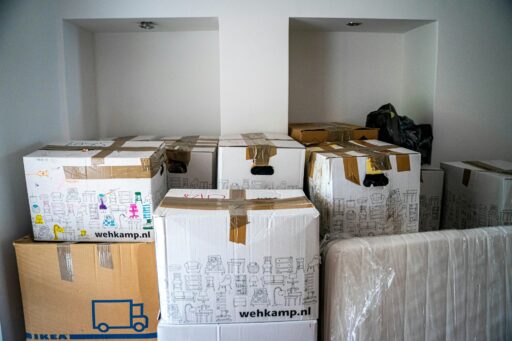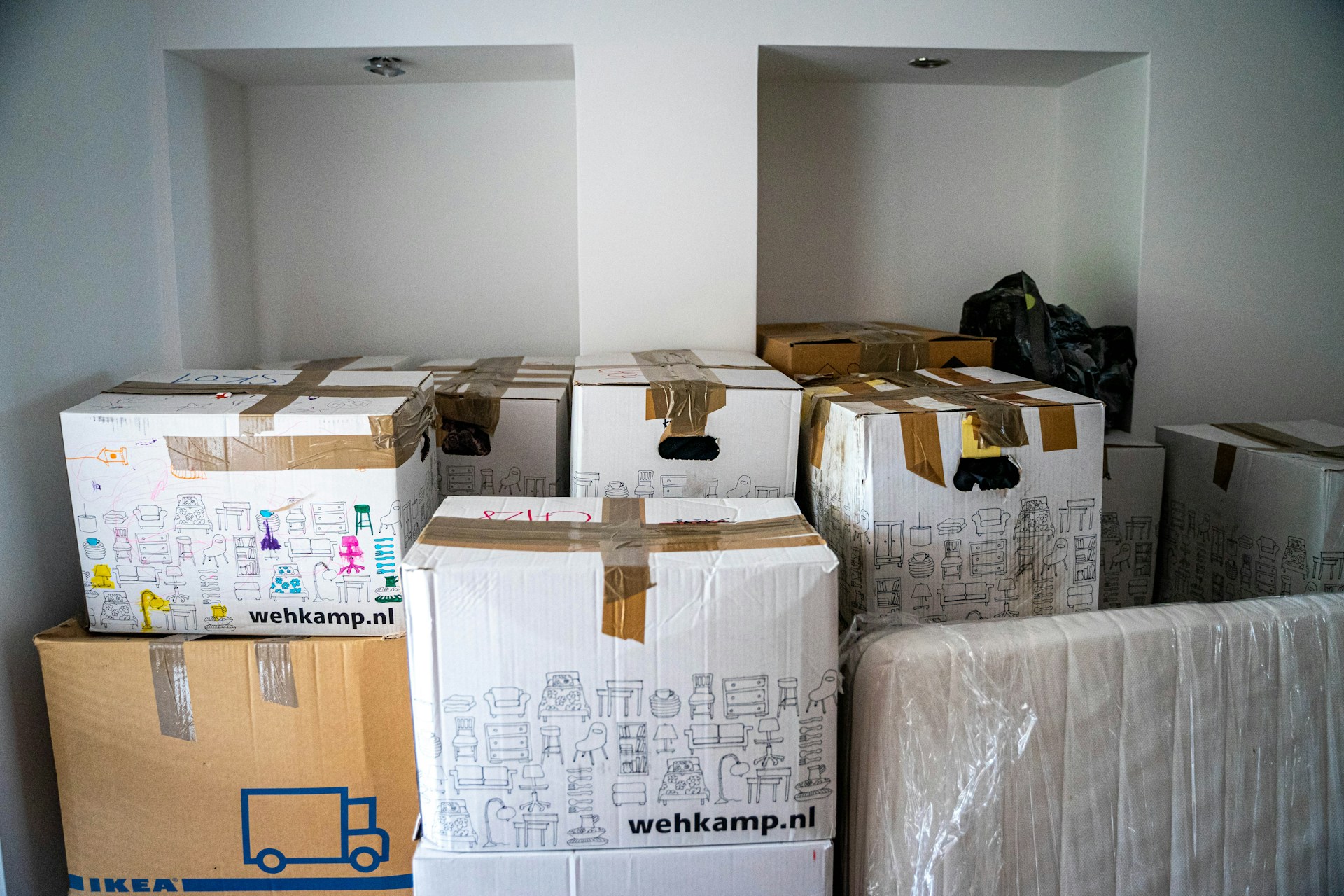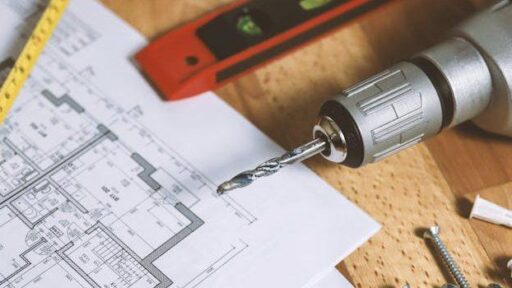Moving into a new home marks not just a change of address, but the start of an exciting chapter. Yet, for many, the process is anything but smooth.
In fact, surveys show that about 82% of Americans found moving stressful in 2024, with nearly half (42%) even admitting it brought them to tears. Challenges like managing stress (48%) and unexpected costs (78%) are common, often leading to regrets like not decluttering enough (22%).
This comprehensive guide aims to demystify the moving journey, breaking down every step from pre-move preparations to the final touches in your new space. Follow these actionable checklists to keep stress at bay and ensure nothing falls through the cracks. By the end, you’ll have a streamlined approach to packing, moving day, and setting up a cozy, fully functional home.
The Pre-Move Countdown
Think of your move as a marathon. Starting early, eight weeks out, is your secret weapon against stress. Planning ahead lets you compare quotes, set a budget , and avoid rushed, costly decisions. It’s about control, not chaos.
8 Weeks Out
Eight weeks out, set the stage. Establish your moving date and create a master calendar for deadlines like lease end, utility shutoff, and mail forwarding. Create and back up a digital folder for all moving documents, including wiring photos.
Get at least three licensed and insured moving quotes, confirming reservations early for better rates. If DIYing, research rental costs. Set a budget and check for employer relocation assistance. Visit your new place to scout logistics like parking and building rules. Request time off work.
This is also prime time to declutter ruthlessly. Sort belongings into “keep, donate, sell, and discard” categories. Selling or donating unwanted items saves money on packing and moving costs, as movers often charge by weight/volume. Less stuff means less to pack and unpack. Finally, set aside items movers won’t handle, like firearms or fine art, for personal transport.
6 Weeks Out
Six weeks out: inform friends/family and consider a ‘packing party’. Book your moving van or confirm reputable movers, especially during peak season. Gather quality packing materials: sturdy boxes (various sizes), bubble wrap, tape, markers, and specialty boxes. Stockpile supplies centrally. Use uniform boxes (medium with handles, bankers for books) for easier stacking. Find free boxes from local businesses.
Label every box clearly on all sides with its destination room, contents, and fragility warnings; color-coding helps. Create an inventory list. Photograph electronic wiring. Disassemble non-essential furniture, securing hardware with photos. Book long-distance travel (flights, hotels) early.
4 Weeks Out
Four weeks out: consider moving insurance. Consume perishables, donate non-perishables. Gather all critical documents (financial, medical, passports) in one secure folder. Notify current insurance providers. Schedule internet installation at your new place. If moving cities, research new doctors, dentists, and vets, and transfer pet records. Plan your long-distance travel route.
2 Weeks Out
Final two weeks: create a folder for tax-deductible receipts. Safely dispose of hazardous items (movers won’t take them). Notify current service providers. Set up mail forwarding. Return borrowed items. Arrange a babysitter or pet sitter for moving day. Back up computer files. Rehome plants if not moving. Update your driver’s license and online shopping addresses. Transfer prescriptions.
Smart Packing Strategies for an Efficient Move
Packing can feel endless, but smart strategies protect your belongings and simplify unpacking.
Choosing the Right Tools
For efficient packing, use uniform box sizes, especially medium boxes with handles and bankers boxes for heavy items like books, which streamline stacking and loading. Large plastic storage bags are great for linens and clothes, and can also provide cushioning. Label every box clearly on all sides with its destination room, contents, and fragility warnings; color-coding helps. Pack boxes fully, filling empty spaces with soft items to prevent shifting, as movers may refuse loosely packed boxes.
Protecting Your Valuables
Protect fragile items and electronics carefully. Wrap individual dishes and pack them on their sides. Fill glasses with paper and use dividers. For framed art, tape an ‘X’ on glass, then wrap and use specialized frame boxes. Photograph electronic wiring before unplugging for easy reassembly, and use original packaging or ample padding.
The “Essentials” and “Comfort” Boxes
Prepare “essentials” and “comfort” boxes for immediate post-move comfort. The “essentials” box should hold items needed right away: medications, toiletries, clothes, chargers, basic cleaning supplies, and unpacking tools. A personalized “comfort box” for each family member (including pets) can contain items like favorite blankets, toys, or snacks. These boxes help reduce initial anxiety and establish normalcy.
Clothing, Kitchen, and Bulky Furniture
For clothing, use trash bags over hangers to save time. Use a cooler for local refrigerated items. Tape open bottles to prevent leaks. Pack heavy items like books in smaller boxes to prevent breakage. Repurpose wheeled luggage for heavier items. For bulky furniture, photograph disassembly and store all hardware in labeled bags for easy reassembly.
Moving Day
Moving day represents the culmination of extensive planning, and while it can be inherently dynamic, clear communication and an unwavering focus on safety are paramount to ensuring a smooth and efficient process.
Morning of the Move
Wake up early on moving day for last-minute tasks and to avoid stress before movers arrive. Pack final items like bedding, bathroom essentials, and kitchen perishables (discarding anything that might spoil). Do a thorough final sweep of the old home. Designate a point person for loading/unloading. Keep important documents (leases, IDs, contracts) on hand. Verify parking permits or elevator reservations.
Working with Your Movers
Greet movers upon arrival and provide a walkthrough, highlighting fragile items or disassembly needs. Ensure safety: clear pathways, protect floors, and dress appropriately. Keep children and pets safely out of the way. Stay present during loading to answer questions and observe handling. Offer refreshments and indicate restroom location. Review and sign all moving documents (Bill of Lading, inventory) before loading. Consider tipping movers after delivery and reassembly.
Leaving Your Old Home Behind
After loading, do a final check of the old home for forgotten items and garbage. Clean the old home if required (DIY, friends, or professional cleaners). Secure the old home and begin your journey to the new residence. Maintain communication with the professional movers for estimated arrival time.
Your New Home Setup Checklist
Transforming a new house into a functional home begins once the movers depart. This phase prioritizes immediate essentials and safety for a smooth transition for everyone, including pets. Connecting utilities and unpacking critical items like bedding and bathroom essentials are top priorities for habitability. Simultaneously, securing the new home by changing locks, installing smoke detectors, and identifying emergency shut-off points ensures peace of mind.
Utilities, Essentials, and Security
Upon arrival, inspect all boxes against your inventory; note any missing or damaged items immediately and inform the moving crew. Ensure essential utilities (electricity, water, gas) are connected and functional, and finalize arrangements for internet and cable. Unpack “essentials” and “comfort” boxes first for immediate use. Assemble beds, unpack bedding, and prepare the bathroom. Locate and label the fuse box and main water valve for emergencies. Secure your new home by changing locks, checking windows/doors, and installing smoke detectors/fire extinguishers. Connect major appliances; let the refrigerator sit upright for three hours before plugging in. Hang curtains promptly for privacy and better rest.
Unpacking, Organizing, and Personalizing
Once immediate priorities are met, begin making your new house feel like home. Create a detailed post-move to-do list. Unpack gradually, room by room, to stay organized and prevent clutter. Responsibly recycle or store packing materials. After unpacking, thoroughly clean your new home. Finally, personalize your space with art, books, and decorative touches.
Systematically set up each room.
In the Living Room, arrange major furniture to define traffic flow, hang art, and test electronics.
In the Kitchen, unpack dishes near the sink/dishwasher, set up appliances, and organize pantry items.
For Bedrooms, install window treatments, set up bedside storage, and coordinate bedding.
In the Bathroom, hang towel racks, stock hygiene items, and mount hooks. Enhance comfort and productivity by positioning your wireless router centrally and managing cords.
If working remotely, set up a quiet home office. Sync smart home devices for simplified control.
Address Changes, Registrations, and Local Services
Administrative updates are crucial for a smooth transition. Notify banks, credit card companies, subscriptions, and employers of your new address. If moving across states/provinces, register for local services like healthcare and vehicle registration, and update voter registration. Research and select new healthcare providers (doctors, dentists, vets). Prioritize enrolling children in new schools. Explore your new neighborhood and introduce yourself to neighbors to foster community connections.
Helping Pets and Children Adjust
Moving can be challenging for children and pets. For children, validate feelings of sadness about their old home; allow them to process emotions at their own pace. Create excitement by involving them in new room decor or planning fun new activities immediately upon arrival (e.g., park, ice cream).
For pets, create a familiar “home base” with essentials upon arrival. Pet-proof the new home (cover sockets, tuck cords). Unpack their items first, set up a comfortable space, and gradually allow them to explore one room at a time. Keep cats indoors initially. Provide extra attention and playtime to help them feel secure.
Final Walkthrough and Maintenance Plan
Before calling the move complete, do a final cleanup sweep of each room. Inspect walls and floors for scratches or scuffs. Assemble a maintenance binder with appliance manuals, warranties, and vendor contacts. Schedule routine tasks, HVAC filter changes, smoke detector tests, gutter cleanings, in a digital calendar. This proactive stance prevents small issues from becoming costly repairs down the road.
Conclusion
Moving and establishing a new home need not be a chaotic endeavor. With thorough planning, disciplined packing, and strategic setup, you can transform an empty space into a comfortable, secure haven in record time. By following this essential moving and home setup checklist, you’ll minimize stress, optimize efficiency, and lay the foundation for countless memorable moments.
An often overlooked yet vital step in a stress-free moving checklist is finding a reliable place to store items you don’t need immediately—think off-season decor, children’s toys, or bulky furniture. Self storage like the storage units Victoria offer a secure, short-term solution to keep these belongings safe and out of the way while settling into your new home. With climate control and flexible access, they help you know your items are protected, giving you the space and peace of mind to focus on unpacking essentials, decorating one room at a time, and truly making your new house feel like home.







